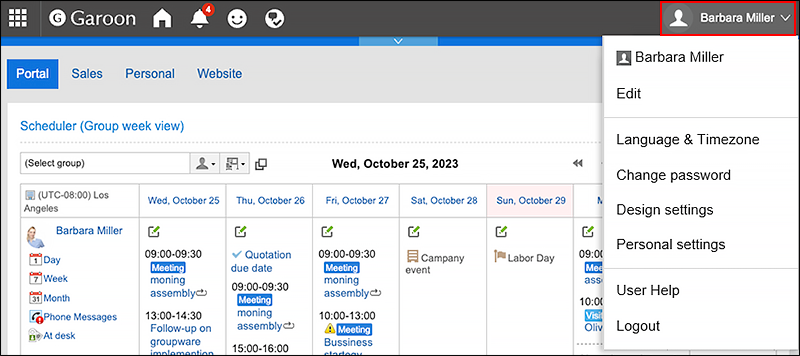Managing Personal Address Books in CSV files
Manages personal Address Book data in a CSV file.
Importing Data from a CSV File
Import data from a CSV file.
-
Create a CSV file to import data.
For information on CSV files, refer to the CSV format in the Address Book. -
Click the "User name" in the header.

-
Click Personal Settings.
-
Click Setting of each application.
-
Click Address Book.
-
Click "Import Personal Address Book".
-
In the "Import Personal Address Book - Step 1/2" screen, select the CSV file that you created in step 1.
-
Set the data to import, and click Next.
The setting fields are as follows:
- Character encoding:
Encodes data from a CSV file with the selected character code.
The following character encoding can be selected:- Unicode (UTF-8)
- Japanese (Shift-JIS)
- ASCII
- English (Latin1)
- Simplified Chinese (GBK/GB2312)
- Thai (TIS-620)
- Skip the first row:
If the header row contains information other than data such as an item name and a comment, select "Yes".
- Character encoding:
-
On the "Import Personal Address Book-Step 2/2" screen, confirm the contents of the CSV file, and then click Import.
Exporting Data to a CSV File
Export data from the Personal Address Book to a CSV file.
-
Click User name in the header.

-
Click Personal Settings.
-
Click Setting of each application.
-
Click Address Book.
-
Click "Export Personal Address Book".
-
On the "Export Personal Address Book" screen, set required settings for the exported data.
The setting fields are as follows:
- Character encoding:
Select the character code that you want to use for encoding.
The following character encoding can be selected:- Unicode (UTF-8)
- Japanese (Shift-JIS)
- ASCII
- English (Latin1)
- Simplified Chinese (GBK/GB2312)
- Thai (TIS-620)
- Include header row:
To export an item name to the header row of a CSV file, select "Yes".
- Character encoding:
-
Confirm your settings and click Export.
-
Save the file with a function provided by your Web browser.